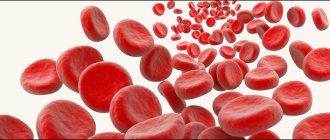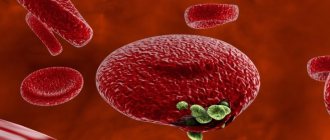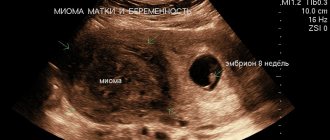Adenoids are glands consisting of lymphoid tissue, similar to tonsils. Unlike the tonsils, they cannot be seen when you open your mouth because they are located above the roof of your mouth. Adenoids grow during childhood and begin to shrink around age 8. In adults they are very small or absent. When the adenoids become too large (adenoid hypertrophy), they can cause an obstruction in the passage of air through the nose.
Adenoids, like tonsils, perform the function of producing lymphocytes and antibodies, helping the body protect itself from microorganisms that penetrate the nasal and oral cavity. Along with the palatine tonsils, they provide immune protection, which is especially important in childhood.
In some cases, the functions of the adenoids are disrupted: after repeated bacterial or viral attacks, this tissue increases excessively in volume (hypertrophy occurs), which is the cause of the appearance of characteristic symptoms. In children, inflammation of the adenoids is a common pathology leading to breathing problems and other complications that should not be overlooked.
Types of disease
Adenoid hypertrophy is classified depending on the degree of nasopharyngeal obstruction:
- I degree (obstruction less than 25%). Adenoid vegetation has spread to 1/3 of the nasopharynx and vomer. Difficulty breathing and discomfort are possible only at night when the child is sleeping.
- II degree (damage from 25% to 50% of lymphoid tissue). Accompanied by severe difficulty in nasal breathing during the daytime. The child does not sleep well at night due to snoring.
- III degree (between 50% and 75%). Adenoid vegetations are observed in most of the nasopharynx, completely covering the vomer. In rare cases, adenoids protrude into the lumen of the pharynx. The child breathes exclusively through the mouth, as nasal breathing becomes impossible.
Children with adenoid hypertrophy or recurrent adenoiditis usually have, in addition to symptoms of respiratory distress, signs of recurrent otitis media, chronic sinusitis, and persistent rhinitis.
Symptoms of enlarged adenoids
Because the adenoids trap germs that enter the body, sometimes the tissue becomes temporarily inflamed (as if it were swelling) in an attempt to fight off the infection. Often inflammation of the adenoids, called adenoiditis, is accompanied by tonsillitis and pharyngitis.
Clinical signs of adenoiditis in children are associated with three factors: a mechanical obstruction that occurs when the nasopharyngeal tonsils are enlarged, the development of an infectious process and a violation of reflex connections.
Inflamed or infected adenoids make breathing difficult and lead to the following problems:
- stuffy nose, which causes breathing through the mouth;
- snoring and problems with night sleep, which leads to daytime lethargy, weakened memory, fatigue and decreased performance at school;
- inflammation of the lymph nodes in the neck;
- hearing problems;
- quiet, monotonous and nasal voice (“nasal”).
The pressure of lymphoid tissue on the vascular structures of the mucous membrane leads to the appearance of edema and the development of a persistent runny nose. This makes nasal breathing even more difficult.
In infancy, hypertrophy of the adenoids is fraught with difficulty sucking, which is accompanied by systematic underfeeding and malnutrition. In this case, there is a decrease in blood oxygenation, which leads to the development of hypoxia.
If these signs appear, it is recommended to show the child to a specialist in the field of otolaryngology. The sooner measures are taken, the greater the chances of a complete recovery and the absence of complications.
Possible complications of the disease
If treatment of the inflammatory process in the adenoid area is not started in time, there is a risk of developing serious health consequences.
The most common complications of inflammation of the adenoids in children:
- weight loss/stunted growth;
- sleep apnea (the child stops breathing for a while);
- sinusitis (inflammation of the maxillary sinus);
- headaches, neuroses;
- partial and temporary deafness due to obstruction of the eustachian tube;
- otitis media and a feeling of stuffiness in the ears;
- impaired swallowing and sense of smell.
In children, adenoid hypertrophy can cause the tongue to move forward, the upper teeth to protrude, and the face to elongate. The adenoid type of face is characterized by a poorly developed jaw, short upper lip, raised nostrils and a curved palate.
A high incidence of middle ear infections is associated with Eustachian tube obstruction. The proximity of the adenoids to this structure explains the relationship between these diseases. Inflammation of the adenoids can lead to Eustachian tube obstruction, which results in the accumulation of infected fluid in the middle ear. This is fraught with the development of recurrent otitis media and other respiratory infections.
Additional information on the topic “Adenoids”
Dear visitors, I invite you to familiarize yourself with additional resources on the site on this topic. They provide both text and video materials. Where the aspects of both treatment and recovery after surgery are discussed in detail, as well as more in-depth data, this may be useful to you for a better understanding of issues related to problematic adenoid vegetations.
Be healthy. Sincerely, otorhinolaryngologist Ph.D. Boklin A.K.
Diagnosis of inflammation of the adenoids
If primary symptoms of inflammation of the adenoids appear, it is recommended to consult an ENT doctor. The specialist will conduct an initial consultation and prescribe a comprehensive examination:
- Endoscopy. A small flexible tube with a camera and a light at the end is inserted into the nose or throat. The condition of the nasal passages and adenoids is visualized on a video screen in real time.
- X-ray of the nasopharynx. It is prescribed only if there is a serious justification, when the consequences of the disease cause great harm to health. For adenoids, an X-ray with contrast is performed.
- Computed tomography (CT). Provides detailed images of the sinuses and adenoids.
- Magnetic resonance imaging (MRI). Features highly detailed images of the nasal passages, sinuses and adenoids.
- Laboratory diagnostics. Often includes an immunoglobulin E test, a general blood and urine test. Also, according to indications, bacterial culture from the nasopharynx is performed to test sensitivity to antibiotics, PCR and ELISA diagnostics to determine infections.
If necessary, the patient is referred to an otolaryngologist who performs a digital examination, epipharyngoscopy and posterior rhinoscopy to determine the consistency, size and degree of adenoid vegetation.
Consultation with a pediatric allergist-immunologist and neurologist (in the presence of epileptiform seizures) is required.
Modern diagnostic methods (endoscopic examination of the ear, nose and throat by an ENT doctor)
The gold standard for diagnosis (and the only correct one) is an endoscopic examination of the nasopharynx by an ENT doctor with good skills and experience working with children from birth. An endoscopic examination is an examination using a video camera, with additional powerful lighting and magnification and display on a television screen, on which both the doctor and the child’s parents will clearly see not only all the structures of the nose, but also the nasopharynx with the mouths of the auditory tubes and adenoid vegetations. In this case, the doctor will evaluate the degree of their increase, inflammation of the mucous membrane, the nature of the discharge, the presence and size of the respiratory lumen. The examination is carried out with a special children's nozzle - a tube less than 3 millimeters in diameter, the examination is non-contact, absolutely painless, does not require special preparation (the ENT doctor only drips vasoconstrictor drops in an age-appropriate dosage before the examination) and has no contraindications and is used in children from birth.
Of course, with such a diagnosis, digital examination is not required.
It is very important that during an endoscopic examination of the ears, such a significant complication as exudative otitis (accumulation of fluid behind a healthy, non-inflamed eardrum) will not be missed. Thanks to good lighting and magnification, the eardrum is transparent during endoscopic examination, so the liquid and air bubbles behind it are clearly visible. Whereas when examined in the usual way, the eardrum, if it is not inflamed, reflects the light of a flashlight and looks gray and opaque, the liquid behind it cannot be seen.
Comparative characteristics of traditional examination of ENT organs and endoscopic examination of ENT organs
| Criteria | Traditional ENT examination | Endoscopic examination of ENT organs |
| Price | Low inspection costs due to the use of tools and a reflector | High cost due to the use of expensive equipment |
| Painless | The contact method can be unpleasant due to the instrumental expansion of the entrance to the nose for examination; the use of an ear mirror is also contact. Digital examination is traumatic and can be painful | The method is non-contact, painless, as nozzles of less than 3 mm are used. in diameter |
| Diagnostic reliability | The examination is superficial, the structures of the nose are examined only in the anterior sections, the nasopharynx is inaccessible for inspection, the adenoids and the mouths of the auditory tubes are not visible, it is impossible to assess the condition of the middle ear behind a healthy eardrum | The reliability of diagnosis of adenoiditis, adenoid hypertrophy, and complications in ENT organs is 100%. All structures of the nose, nasopharynx, ear and throat are examined on a screen with additional magnification and lighting. A diagnostic error has been ruled out. |
| Accuracy of the diagnosis | The diagnosis is presumptive | Reliable diagnosis with assessment of possible risks and complications |
| Purpose of treatment | Overdiagnosis, high probability of prescribing antibacterial therapy “just in case” | Prescribing adequate therapy |
| Assessment of dynamics during treatment | Assessment of only external signs and symptoms (presence of runny nose, cough, etc.) | Assessment of both the dynamics of symptoms and mucus and size of the adenoids, development or relief of complications. |
| Recommendations for adenoid removal | It is possible to prescribe removal of adenoids if they can be preserved and monitored. | Appointment of adenoid removal only if there are indications for removal and an objective assessment of the lack of effect of treatment. |
| Who can carry out diagnostics | Pediatrician, ENT doctor with any experience and qualifications | ENT doctor with practical skills and experience in endoscopic examination of ENT organs in children from birth. |
Laboratory diagnostic methods (the goal is to clarify the cause of chronic adenoiditis and/or adenoid hypertrophy)
To establish the cause of enlarged adenoids, as a rule, a detailed blood test is prescribed, a nasal smear for cytology (cellular composition of nasal discharge), blood for total immunoglobulin E (to exclude an allergic nature or allergic background), feces for worm eggs and scraping for enterobiasis ( adenoids often enlarge due to helminthic lesions), a PCR test for the Epstein bar virus is possible (if mononucleosis is suspected)
Treatment of inflammation of the adenoids in children
Hypertrophied adenoids begin to disappear only from the age of seven. Many children experience complications between the ages of 2 and 3 years. This means another four years of recurring infections and respiratory distress, which is accompanied by poor sleep and changes in facial anatomy.
The only treatment for large adenoids is a surgery called an adenoidectomy. Since adenoids spontaneously shrink over time, indications for surgery should be considered by a medical council. Experts weigh surgical risks against complications caused by airway obstruction.
Adenoidectomy surgery is usually indicated for children with severe airway obstruction aged 3-4 years who have the following symptoms:
- sleep disturbance caused by difficulty in nasal breathing;
- repeated episodes of otitis media with hearing loss;
- chronic sinusitis.
Milder cases are treated with antibiotics and corticoids during crises (adenoiditis). The use of antibacterial drugs is aimed at killing bacteria that cause ear or sinus infections.
Doctors recommend removing adenoids when drug therapy does not give the desired result or complications arise. Surgical intervention involves an adenoidectomy. Sometimes the tonsils and adenoids are removed at the same time. This means that the child undergoes a tonsillectomy and adenoidectomy.
The operation is performed under general anesthesia and does not require long hospitalization after the procedure. Rehabilitation is usually carried out at home under clinical supervision. Most children can return to normal life in less than a week.
There are many adenotomy methods, which one to choose?
These methods are preferable because they have minimal risks of relapse (1%):
- Endoscopic adenotomy using the shaver technique: adenoid tissue is gradually and evenly removed using a microdebrider (special attachment) under strict endoscope control over the volume of adenoid tissue removal.
- Laser adenotomy: during this technique, lymphoid tissue is coagulated and valorized (evaporated). The advantage of this method is coagulation of blood vessels, i.e. bloodlessness, the ability to choose the intensity of exposure.
- The coblation method using a cold plasma beam is the most modern adenotomy method in our time. “Cold plasma” (electric current in a sterile saline electrolyte solution forms a narrowly focused destructive cloud) is characterized by a minimal depth of impact (hundredths of a millimeter), while healthy tissues are not injured. “Cold plasma” has analgesic and coagulating properties, as a result there is no risk of bleeding after surgery.
In most cases, operations are performed under anesthesia without causing psychological trauma to the child.
Classic adenotomy using a Beckmann adenotomy is performed “blindly,” which means there is a high risk of leaving a piece of hypertrophied tissue.
Prevention of adenoiditis
Measures to prevent adenoid hypertrophy include:
- carrying out preventive vaccination;
- daily hardening procedures;
- early diagnosis and rational treatment of infectious diseases of the upper respiratory tract.
Doctors recommend that parents take measures to improve the immunological properties of the body. It is important to follow a daily routine, organize a healthy diet and carry out wet cleaning in the children's room.
Advantages of treating adenoiditis at the RebenOK clinic
Treatment of adenoids in children is carried out in our medical center at affordable prices in Moscow. The clinic is equipped with expert-class diagnostic equipment. We employ competent specialists who have extensive practical experience in the medical and surgical treatment of adenoiditis.
We offer you to use the service of calling a doctor at home. If you have symptoms of adenoid hypertrophy, it is recommended to request a visit to a pediatrician or ENT specialist. A specialist will come to the address specified in the application, conduct an examination and prescribe medications for the treatment of adenoids in children without surgery. If necessary, the patient will be invited to the clinic for a full diagnosis and radical therapy.
Advice from the doctor
As a generalization, I want to say that the well-known joke about curing a runny nose in 7 days and a week does not work with children! Those who treat a child’s runny nose as “ordinary snot that will go away on its own” most often face a whole bunch of complications in the future. Therefore, the sooner you consult an ENT doctor and begin competent treatment, the higher the likelihood that the problem of adenoids will bypass you!
Make an appointment with a pediatric otolaryngologist by calling the single contact center in Moscow, fill out the online appointment form, or contact the reception desk of the Family Doctor clinic.
Health to you and your kids!








